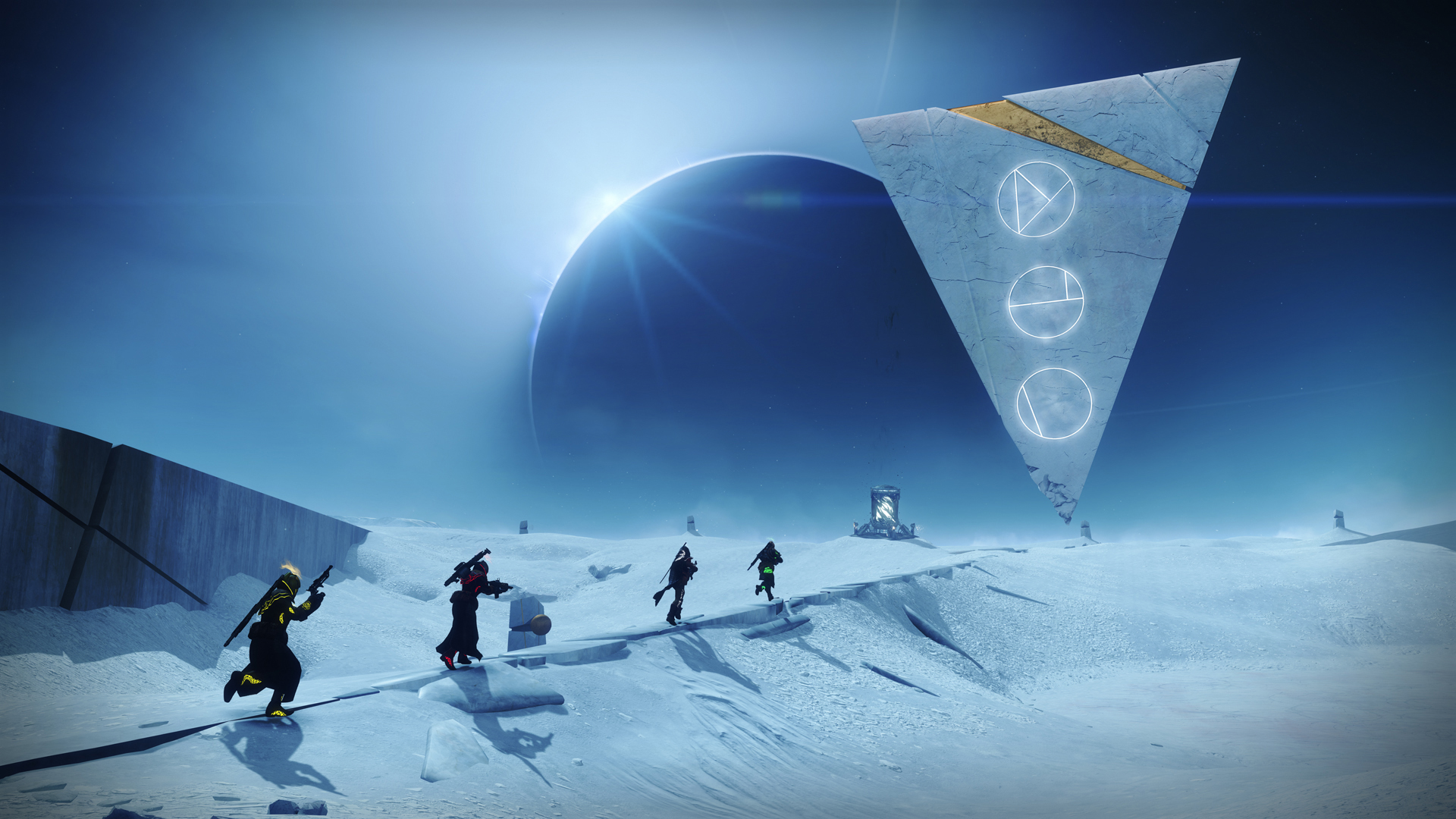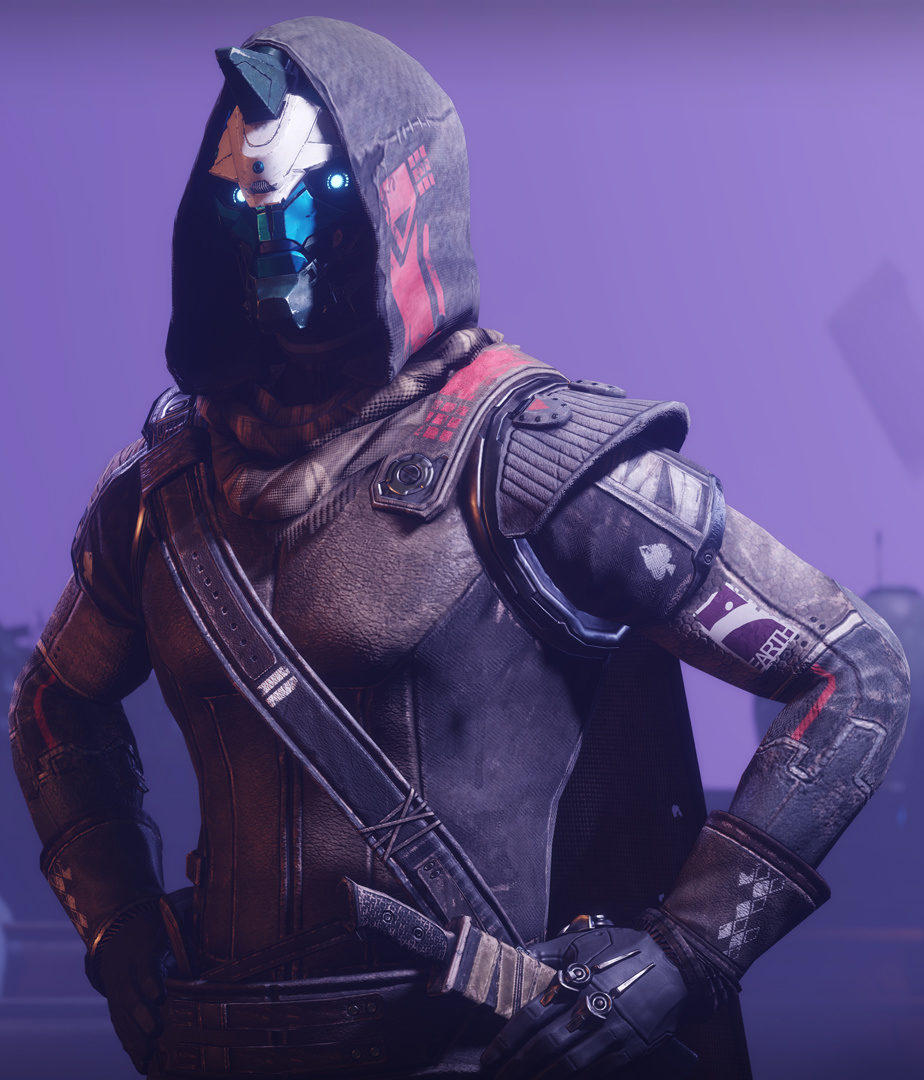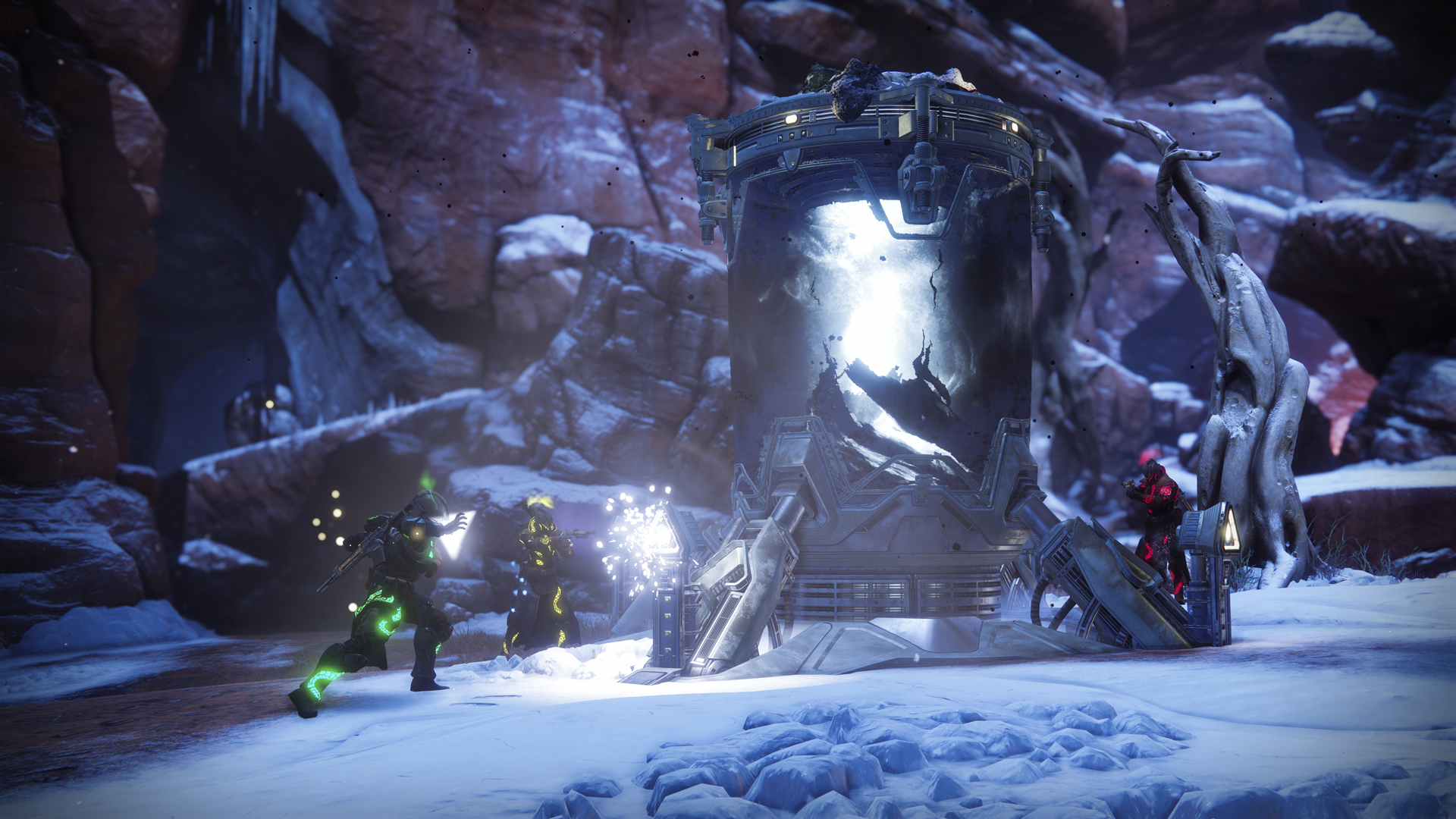When I returned to Destiny 2 a few months ago after spending more than a year away from it, I experienced a mild sense of dislocation, like a miniature version of what I felt when I returned to my childhood home after my first semester in college. Though I expected the flood of colorful splash screens thundering about how things had changed due to Forsaken—which, in my experience, usually overstate their case—I quickly found that Bungie had quietly reinvented the game from the ground up. For the next 20 hours, I felt that I was conquering an entirely new beast, sowed with secrets. It was like I had finally donned a pair of They Live shades so I could see the game in the same way that my utterly obsessed friends did.
A few weeks later, the burnished-metal metropolis of the Dreaming City and the astral wasteland of the Tangled Shore were drained of their wonder, as the true shape of this new Destiny 2 began to reveal itself as much of the old: a seemingly-endless treadmill of Loot and Content, with precious little artifice to mask the grind. While I can certainly agree that the improvements go a long way towards giving the game its sense of grandeur again, the core of what Destiny is still feels elusive, pulled by too many poles—all of which are, not-so-coincidentally, the focus-tested elements that add up to the most mass-market live game possible in 2019.

If it’s not entirely clear yet, I have a complicated relationship with Destiny 2. Though I’ve spent many hours playing it, I’m still not entirely sure how to sum up how I feel about it. It’s not that I would call it a bad game; rather, I would hesitate to call it one game at all. I prefer to think of it as a nexus of interconnected play experiences, or even a destination unto itself, similar to those mildly interactive Flash chat rooms from the mid-2000s, like Club Penguin. Community organizers have long-used the term “third place” to describe where friends and acquaintances congregate when they’re not at home or work, and that’s exactly what Destiny 2 wants to be.
In my loose group of friends, it’s largely succeeded at this aim. Though we all have fairly different tastes, Bungie’s looter-shooter is the only game that all of us play with any regularity. While you could easily dismiss this as a coincidence, or mere anecdotal evidence, I think it speaks to the thrust of its fundamental design—from the ground up, it was built to be a compromise, with enough options to appeal to every strain of player out there. Though this has led directly to its tremendous appeal, it can also make Destiny 2 feel like a game that’s in a perpetual identity crisis. (Case in point: even the name Destiny 2 feels strange now, given that it’s not at all clear that there will be a Destiny 3. If not, will the game remain christened Destiny 2 forever, or will they eventually come around to losing the numeral? It remains to be seen.)
The most striking change when coming from Destiny 2—for context, I and most of my friends stopped playing shortly after the disastrous release of Curse of Osiris in December 2017—was that of tone. Vanilla D2’s main campaign was a whiz-bang space adventure that took almost nothing seriously, full of lobotomized Whedonisms and unconvincing characters ripped out of Genre Writing 101. After I rushed my way through the hour or so of utterly forgettable corridor-crawls that constituted the other major content pack I had missed, Warmind, the shift came almost immediately.

We were no longer zipping and quipping our way through a blue-sky sci-fantasy of magic guns and laser swords. Cayde-6, arguably the literal representation of that tone, was dead, and now we were charged with bringing his killers to justice, traipsing and bargaining our way through the solar system’s underbelly to settle the score. While the arc of the follow-through was a little too-easy to guess—especially when the cosmic monstrosity of a final boss slithered out of a hole in spacetime, only to be immediately slain—it was an altogether more gripping affair than I had expected, and it helped alleviate one of my major issues with the base game.
Tonal adjustments aside, this is still Destiny, which means that you spend a good 90 percent of your time staring down a gleaming gun sight as you whittle down the health bars of endless alien hordes. In terms of the actual meat and potatoes of the gunplay, very little had changed, which is probably for the best. After all, if Destiny has anything close to a coherent mechanical identity, it lies in the endorphin rush of nailing a Servitor in its robotic eye with a well-placed rocket, or demolishing a handful of Dregs with precise bursts from your favorite pulse rifle. Unfortunately for me, however, since all my favorite weapons were made obsolete by the new content, and Forsaken made it much more costly to sacrifice a higher-level weapon to “infuse” a weaker one, I was left with only random drops to get me through the entire campaign, which put a bit of a damper on the whole experience.

You can certainly blame it on bad RNG, but it took me around a dozen hours to find a weapon that I enjoyed shooting as much as the satisfying plink of the MIDI Multi-Tool, or the reliable fire-pattern of Uriel’s Gift. While it’s difficult to quantify exactly why this is the case—weapon feel is, after all, utterly subjective—I think that Bungie’s decision to make every weapon’s traits break down into a handful of random dice rolls (a debate known the community as “random rolls vs. fixed rolls”) contributed significantly to this problem
I can understand why the choir of lifers in the D2 subreddit were slavering for random rolls during the early days of the game, when there was a serious paucity of functional loot, but it can feel quite defeating when you finally get that legendary drop you want only to find that the perks are far from optimal once you’re trying to run a difficult encounter. You can certainly argue that this is a product of Bungie’s careful design. After all, if the game feeds you excellent loot from the start, why would you grind the three-player Strikes for the next three hours for that “powerful gear” drop? Still, a shooter is only as enjoyable as its guns, and I felt as though I was forced to roll with some real clunkers, especially in the opening hours of Forsaken. Given that I was playing with my more enthusiastic friends, who were already fully kitted-out with endgame exotics, I could almost feel the developers behind the loot algorithm laughing at me as they fumbled with the invisible incentives, trying to get me to stay on the treadmill.

Of the new additions to the game’s already considerable list of playable modes, only one really stands out: Destiny 2’s take on PvPvE, Gambit. Personally, I’m no fan of the game’s more traditional multiplayer offerings. While the whole of it has always felt driven by market trends, the PvP especially feels like the half-hearted product of an executive armed with a sleek diagram that boils down to “no multiplayer = no $$$.” That said, Gambit’s ingenious concept of a race to blast the most aliens and bank their souls works remarkably well, especially with the player invasions adding in a whole new level of strategy. While I think the mode is the most exciting thing to happen to multiplayer shooters in quite a while, the sheer amount of effort that you have to put in to create and then maintain a competent build in the game’s other modes is too much to keep me invested. As cynical as this might sound, my primary interest in Gambit these days comes from keeping an eye on other studios that make multiplayer shooters that I enjoy more than D2, like Counter-Strike, and waiting for them to release their Gambit-inspired take on PvPvE too.
This brings me back to the core problem with returning to Destiny 2, and I suppose live games in general: They rely utterly on the mantra everything that’s old is new again. The core problems that first drove me away from the game—its lack of mechanical focus; its incredibly ham-fisted yet portentous world building; the fact that the very act of playing it feels like slipping into an anesthetic stupor—were still present in some form, yet the new layers of paint obscured them. That’s not to say that I don’t enjoy playing the game with my friends; rather, I just feel that rumors of its creative resurrection have been greatly exaggerated by its enthusiastic fanbase, who already loved it to begin with.

Earlier, I discussed how games like Destiny 2 have become a sort of “third place” for many groups of far-flung gaming friends around the world, including mine. To be clear, I don’t think that this is some great coincidence. The people who make and sell video games are very cunning people, and they know that the desire to play games with friends can be stronger than the desire to play any specific game, especially when everyone’s tastes come into play. Much like how you end up grabbing the same greasy takeout to bring to your hangout every week rather than spend an hour arguing about what nice restaurant you all want to go to, there’s a lot of money in the compromise option.
Destiny does not want to be the filet mignon of games. Instead, it wants to be the solid burger joint that you can always rely on for a good time with your friends, every week. To me, a multiplayer game can be that, but only if it’s willing to carve an absolutely immaculate niche for itself, like Counter-Strike or Monster Hunter: World. In my eyes, Destiny 2 is the cube steak of games—the low-quality sirloin that you fry up when you don’t feel like putting too much effort in. My friends seem to like it, there are ways to make it delicious, and I can even see myself chowing down every now and then, possibly even for Shadowkeep. But when I’m by myself, it’s a bit hard to keep down.
Header image: Bungie

Steven T. Wright is a reporter and novelist living in the Twin Cities. He is the former independent games columnist for Variety, and he has written for Rolling Stone, Polygon, Vice, and many others. He almost named his novel after a city in Final Fantasy, but his friends talked him out of it.